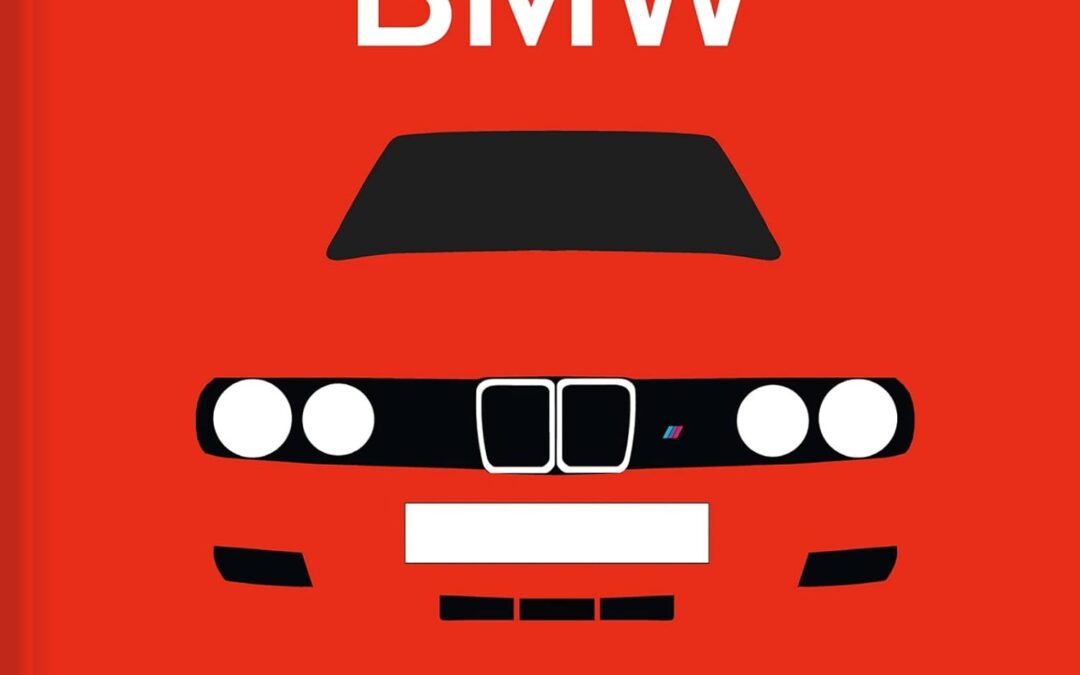
Fifty glorious vintage photographs of classic BMW models teamed with lively text that explains why people love them.
Known as “the ultimate driving machine,” BMW is one of the world’s most prestigious car brands. Renowned for their smooth handling, precision engineering, and sleek looks, BMWs pair driving comfort with powerful engines. Originally formed during the World War I, the company reached new heights of popularity in the 1960s and is still going strong today.
This captivating book outlines all the most iconic BMW models, from their first car, the Dixi of 1927, to today’s high-performance models, including the beautiful 1955 507 roadster, the instantly recognizable 2002 from the 1960s, and the iconic E30 M3, first manufactured in the mid-1980s. Each evocative vintage photograph is accompanied by an insightful explanation.
The ideal gift for every car enthusiast, whether they’re a BMW owner or aspiring to be, this beautifully illustrated book perfectly conveys the joys of this classic brand.
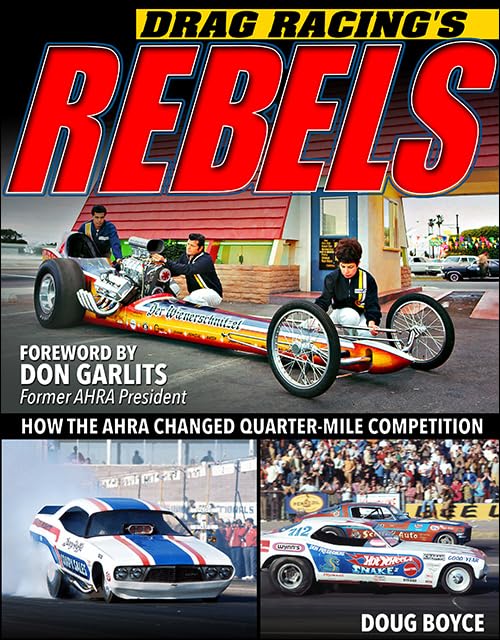
Learn the entire fascinating story of the American Hot Rod Association (AHRA) in this wonderfully illustrated color history.
When the National Hot Rod Association (NHRA) was formed in 1951 by Wally Parks, the reasoning for the formation was to “create order from chaos” by instituting safety rules and performance standards that helped legitimize the sport of drag racing. Some organization was certainly necessary. A postwar boom in automotive enthusiasm was reaching new heights, and Hot Rod magazine and the NHRA were right in the thick of it.
The NHRA hosted its first drag racing event in 1953, and in 1955, the organization staged its first national event, which was simply called “The Nationals.” The AHRA formed in 1956 as an alternative to the NHRA, where the drivers voted on the rules (rather than sanctioning bodies and tracks), and their influence on the sport was felt almost immediately.
When the NHRA denied the use of nitromethane in 1957, the AHRA approved it. When the NHRA banned aircraft-powered dragsters in 1961, the AHRA welcomed them. When the NHRA said no to the emerging Funny Car in 1965, the AHRA said yes. When fans and racers screamed for a heads-up Super Stock category in 1968, the AHRA delivered. The AHRA was called a rebel association. Some say that it was more of an association that got things done–to the delight of fans and racers. The AHRA was on equal ground with the NHRA by the 1970s, drawing enormous crowds and racer entries.
In this fascinating history, veteran author Doug Boyce tells the story of the AHRA: the rise, the competition, the events, and the eventual downfall of the organization. After AHRA President Jim Tice passed away in 1982, internal fighting for control of the association resulted in its doom. Get the whole story here, and add this wonderful volume to your drag racing library.

Automotive author Peter Nygaard opens his archives for the first time to tell the story of one of the most famous races in the world.
Since its first world championship in 1950, Formula 1 has held racing fans enthralled around the globe. In this book, motorsport historian, photographer, and collector Peter Nygaard opens his exclusive archives for the first time to tell the stories of this race’s illustrious history. Moving decade by decade, and illustrated with more than four hundred images, Formula 1 celebrates and illuminates more than seventy years at the pinnacle of motor racing. Nygaard highlights the legendary champions—and their biggest victories, famous on-track incidents through the years, and the technological developments that have propelled this famous event to new heights during its rich history.
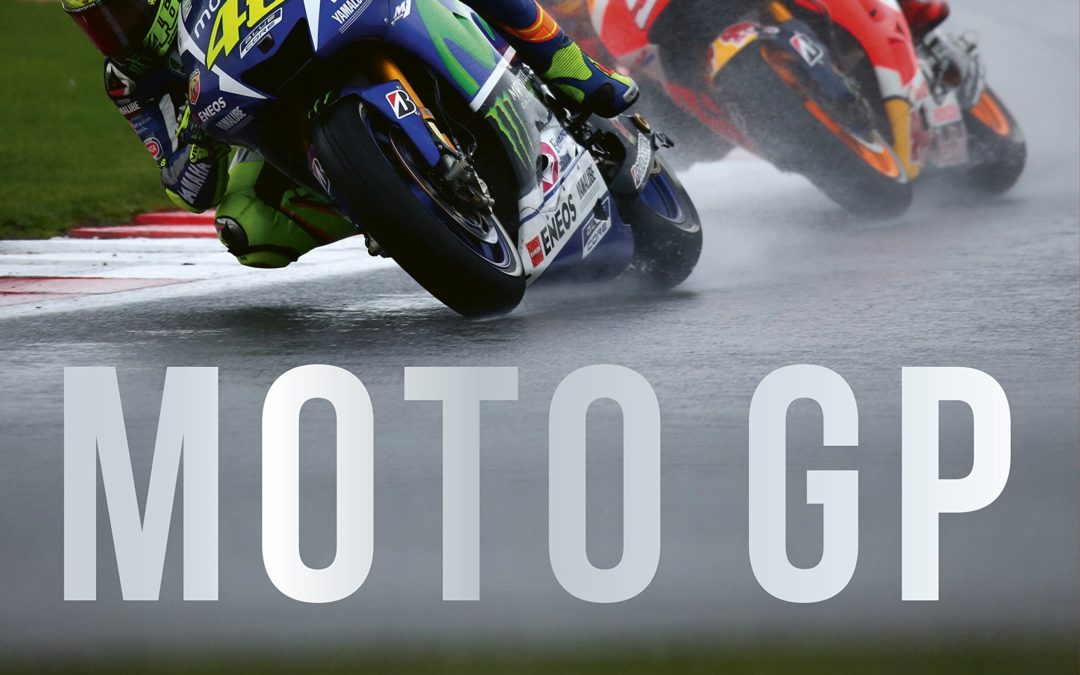
Over 200 photographs from the 1970s to the present day of the world’s best riders, bikes and GP circuits
Moto GP is about the individual’s story, the battles between the individuals, the different personalities, the different men that are striving for one goal, to win the world championship’. Freddie Spencer, three-time world champion
Since its earliest beginnings on public road courses to today’s purpose-built championship courses, Moto GP has always been about one thing: pushing man and machine to new heights of performance.
Telling the story of how leading manufacturers such as Yamaha, Honda and Suzuki, have strived to build the perfect machine, and detailing the incredible rivalries of such sporting legends as Kenny Roberts and Barry Sheene, Freddie Spencer and Eddie Lawson, Valentino Rossi and Jorge Lorenzo – to name just a few – Phil Wain uncovers the stories behind historic races, the innovations that made the best bikes on the grid and describes the infamous moments in which riders were made champions.
Moto GP is a photographic celebration of the heroes, bikes and circuits that have defined the adrenaline-soaked world of motorbike racing.
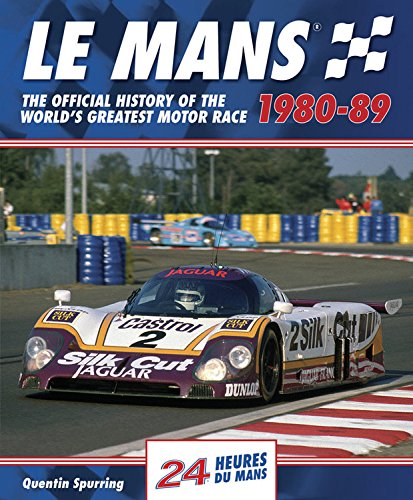
Le Mans hosted the fastest racing cars on the planet, top speeds on the world-famous Mulsanne straight exceeding 250mph for the first time in 1988. This decade’s new Group C regulations challenged motorsport engineers to achieve race-winning engine performance while saving fuel, fostering the original rationale of this historic event as a proving ground for emerging automotive technologies. It accelerated the development of control electronics and aerodynamics, and soon increasingly sophisticated racing coupés were setting new performance standards. The 1980 event was uniquely won by Jean Rondeau, a Le Mans resident, with a car of his own manufacture. After seven impressive Porsche successes, Jaguar and Mercedes-Benz, both returning to motorsport after long absences, won in 1988 and 1989. By the end of the decade, Le Mans was contested by Aston Martin, Jaguar, Mazda, Mercedes-Benz, Nissan, Peugeot, Porsche and Toyota.
– Highly detailed year-by-year coverage of the decade’s ten races, giving over 30 pages of information and photographs for each year.
– Official status provides a number of unique features, including the reproduction of the full-color race poster artwork for each year and photographs from the ACO’s archives.
– The images include rare colour, and the emphasis is on photographs that enthusiasts will not have seen before.
– The story of each race is told through photographs and an accompanying commentary.
– Complete data for each year includes technical regulations, entry list, circuit changes (with diagram), lap chart, full results and category awards.
– The whole work is beautifully designed and presented.
– Already established as a world-class event, the ACO’s annual race scaled new heights during the 1980s, a time of spectacular transformation in top-flight sports car racing.
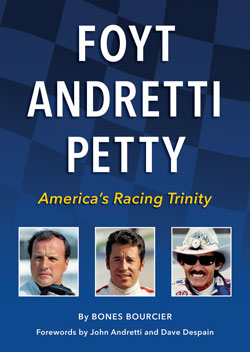
America’s Racing Trinity
Twenty years after they hung up their helmets, their names remain synonymous with the sport they carried to new heights. A.J. Foyt, Mario Andretti, and Richard Petty rose to fame just as the American media – print, radio, and, crucially, television – began to legitimize auto racing. The timing was perfect. In Foyt, Andretti, and Petty, the nation found characters as compelling as any in sports or entertainment.
Foyt was all Texas, John Wayne in a fireproof suit, stomping into Victory Lanes from Indianapolis to Le Mans. Andretti, who’d sailed from Italy with his family at age 15, struck for all outsiders the same yes-you-can chord sounded by another Italian-American, the great Frank Sinatra. Petty, the genial North Carolinian who signed autographs until the last fan went home, put a smiling Andy Griffith face on the American South, no small feat in the tumultuous ’60s.
They crossed paths often, on the track and in the headlines. Take 1967, which opened with Andretti beating NASCAR’s best at Daytona, peaked with Foyt’s third Indianapolis 500 win, and ended with a record 27 victories for Petty. Or the three-season stretch from 1977-79, during which Foyt became the first four-time Indy winner, Andretti earned the World Driving Championship, and Petty captured a landmark Daytona 500.
They even throttled back their careers in near-unison, Petty in 1992, Foyt in ’93, Andretti in ’94. Today all three are revered; as they walk through crowded pit areas, people step back to make way. Charisma never ages.
This is no mere three-act biography. Laced with quotes from first-hand interviews with Foyt, Petty, Andretti, and their peers, and spiced with period accounts from the motorsports world and the changing social landscape, this is award-winning author Bones Bourcier’s history of modern American automobile racing as refracted through the lives of three extraordinary champions.
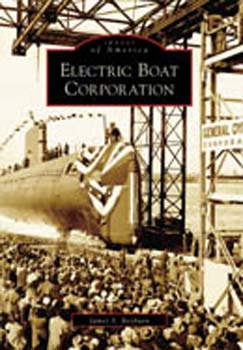
Electric Boat Corporation has been a world leader in submarine development, design, and construction for more than a century. In 1900, the company delivered the Holland, the first submarine accepted by the United States Navy. Fifty-five years later, it turned fantasy into fact by sending the world’s first nuclear-powered ship, the submarine Nautilus, off on its maiden voyage. It later built the world’s first ballistic missile–firing submarine, the George Washington, and most of the nation’s current underseas fleet. Between those years, it pioneered standardized construction of merchant ships, submarine chasers, torpedo boats, and yachts and also produced airplanes, fishing trawlers, diesel engines, and electric motors. This collection of more than 200 archival photographs traces the company’s sometimes roller-coaster existence through 10 historic decades when America—and Electric Boat Cor poration—grew into an industrial giant. It is an engaging collective portrait of American ingenuity, know-how, and persistence driving technology to new heights.
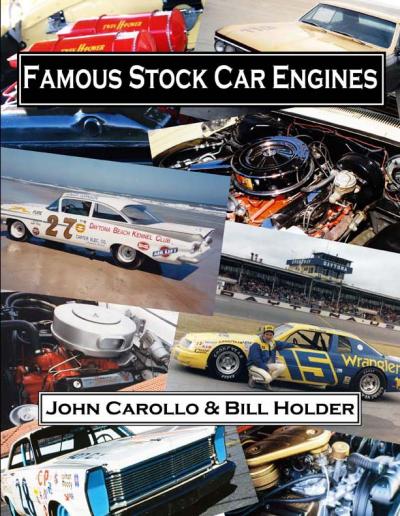
“Famous Stock Car Engines is a book for anyone who wonders about what’s under the hood. From the early days of truly stock to all out, purpose built racing engines, this is the book that shows you that the factories are still in the driver’s seat. Written by two veteran motorsports writers, the sequence of how Detroit came into stock car racing from the start and helped elevate it to fantastic new heights is fully documented. It includes looks at the wining engines of stock car racing from year one to the very latest from Detroit and Japan. Includes a foreword by legendary racer Curtis “”Crawfish”” Crider. Chapters include detailed analysis of the Ford Flathead 239 – 255 CID V8s; Oldsmobile Rocket 303 – 371 CID V8s; Buick Century 322 – 364 CID V8s; The Hudson Hornet 308 CID Inline Six; Pontiac 287 – 421 CID V8s; Chevy Small Block 265 – 350 CID V8s; The Ford Y-Block Engine; First Generation Chrysler Hemi V8; The 348/409 Cubic Inch Chevy V8s; Chevy Big Block V8s; The Ford Big Block FE 427 V8; The Second Generation Chrysler 426 CID Hemi; Ford Boss 429 CID V8; AMC 366 V8 Engine; Ford Small Block V8s; The Grand National V6s of NASCAR; Restrictor Plate Engines; Chevy 358 CID SB2; The 2001 Dodge NASCAR Motor; The Toyota Tundra V8; and 2010 NASCAR Engines.
“
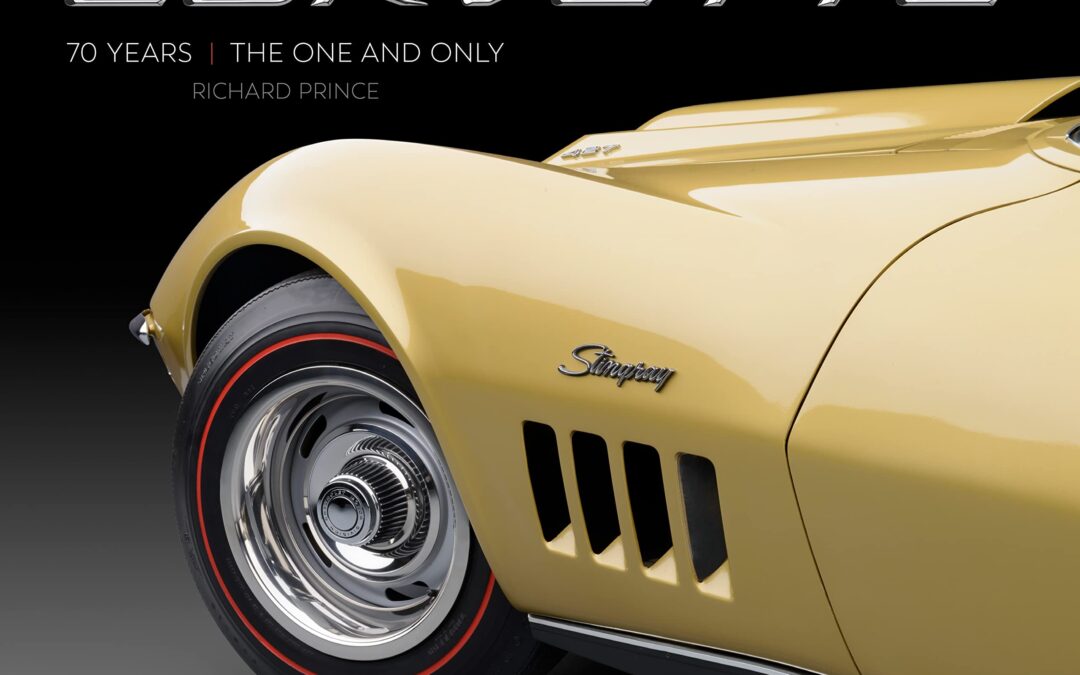
There’s something for every enthusiast in Corvette 70 Years, from the classic early-generation models, to the legendary race cars, to the latest stunning mid-engine C8. Climb in and fasten your seat belt.
Chevrolet’s Corvette is one of the most influential and iconic American automobiles in history, holding the mantle of America’s sports car across seven decades. In Corvette 70 Years: The One and Only, author Richard Prince offers a richly illustrated and detailed book that captures the full story of one of these legendary automobiles. Beautiful, contemporary photos and rare historical images accompany in-depth analyses of milestone cars and events. Notably, the story is told through the lens of the three dozen most influential Corvettes representing all eight generations, including the:
- The 1953 car that started it all
- New performance heights in 1957 with fuel-injected V8
- Early design and engineering specials , including the 1957 SS, CERV I, Mako Shark II
- Landmark 1963 split-window coupe
- The first of the revolutionary styled C3s
- All-new 1984 C4 and powerful Callaway twin-turbos and ZR1s
- World-class 1997 C5
- Ultra-high-performance C5, C6, and C7 Z06 and ZR1
- Revolutionary mid-engine C8 Corvette introduced in 2020
- Corvette racecars
Created with the cooperation of General Motors, the book brings to light the engineering and design stories behind one of GM’s most famous cars, as well as its key players. Comprising a unique perspective on a motoring legend, Corvette 70 Years truly is the one and only.
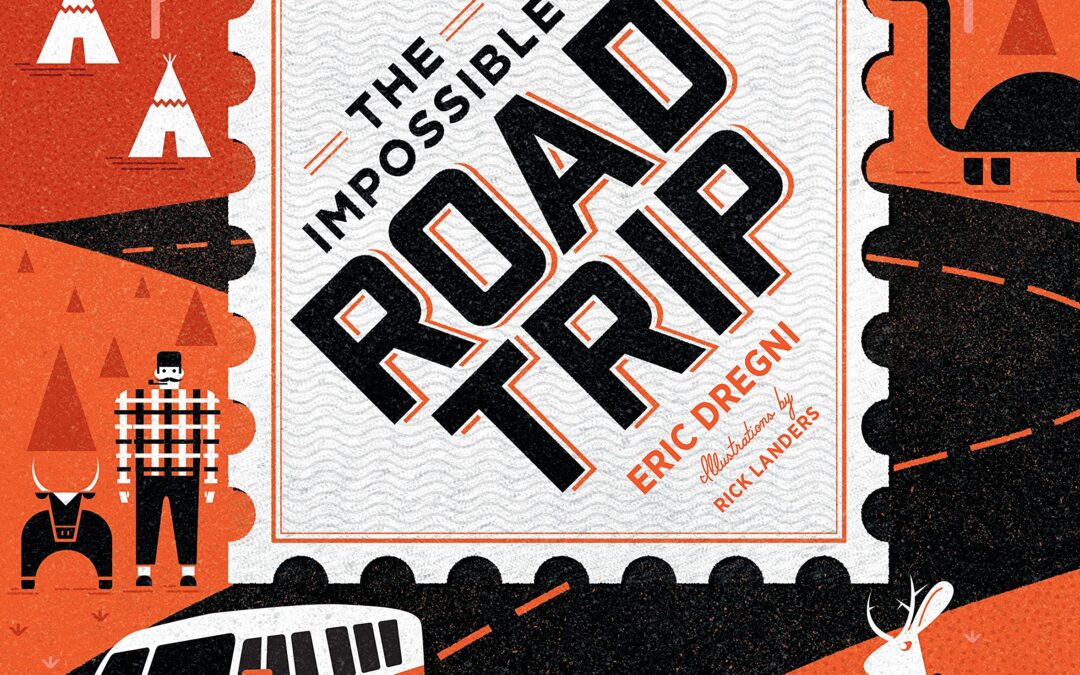
Filled with color photography, entertaining site descriptions and histories, and five unique infographic map illustrations, The Impossible Road Trip is your ultimate look back at America’s most famous—and quirkiest—roadside attractions, past and present.
The great American road trip is back. With its advantages for your health, budget, and the environment, now is the time to plan the road trip you have always dreamed of taking.
Following in the great tradition of the mid-century golden age of car travel, join the new wave of road warriors with a targeted itinerary chosen from the 150 roadside attractions explored in this colorful guide. From famous to quirky and covering all 50 states, author Eric Dregni gives you an unprecedented look at the breadth of roadside attractions in the US, illustrated in part by the photography of architectural critic and photographer John Margolies (1940–2016). Specially commissioned infographic map illustrations capture the spirit of mid-century automobile travel.
Each site depicted is accompanied by a lively and insightful history and color imagery. From autumnal New England to the gothic South, from the homey Midwest to the great expanses of the Desert Southwest, the dizzying heights of the Rocky Mountains, and the breathtaking Pacific Coast, The Impossible Road Trip encompasses it all:
- Neon-shrouded motels
- Mimetic architecture
- Tourist traps
- Roadside sculpture
- And much more
You’ll see sites both famous and esoteric, including the Cardiff Giant in Cooperstown, New York; the five-story Haines Shoe House in York, Pennsylvania; Solomon’s Castle in Florida; the world’s largest fish in Hayward, Wisconsin; one of several Paul Bunyan statues; Bob’s Big Boy in Burbank, California; and so many more.
With The Impossible Road Trip in hand, set out to discover the nation’s oft-overlooked nooks and crannies.

Relive LA’s golden age with this lavish new book! Hollywood’s Trains & Trolleys takes you along the trolley routes that connected the Hollywood studios from Boyle Heights to the Pacific Palisades. For the first time, this beautiful book by Josef Lesser & Marc Wanamaker zeroes in on the trains and trolley movies produced within a 30-mile radius of Hollywood. Explore the history of these movies with many never-before-seen photographs showing every aspect of production and location from The Squaw Man (1914) to Who Framed Roger Rabbit (1988) … 75 years of movie making in Hollywood. Plus a colorful map of the historic and present-day studio locations and routes of the “red” and “yellow” streetcars!
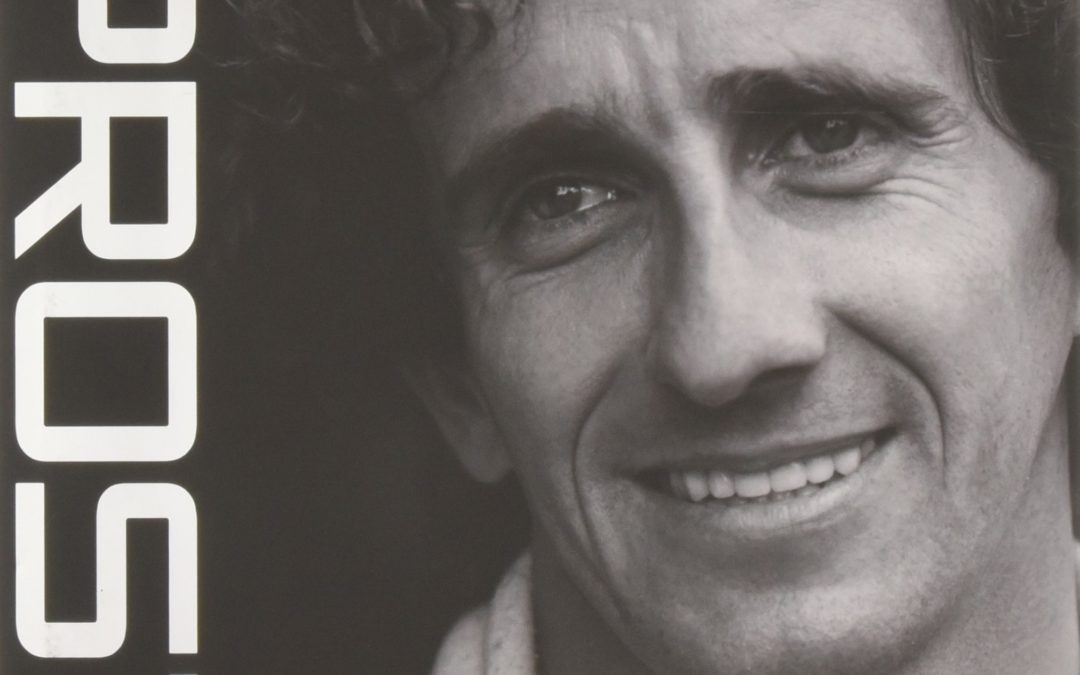
Four-time Formula One Drivers’ Champion Alain Prost is one of the best racing drivers of all time. Having discovered karting at the age of 14 during a family holiday, Prost progressed through motorsport’s junior ranks, winning the French and European Formula Three championships, before joining the McLaren Formula One team in 1980 at the age of 24. In his six seasons with McLaren, he won 30 races and three driving titles and in 1985 he became the first French World Champion. In 1986 he became the first back-to-back champion since Jack Brabham 26 years earlier. In 1987, his 28th Grand Prix victory beat Jackie Stewart’s 14-year-old record. However, in 1988 his new teammate Ayrton Senna won eight races and the driving title. Thus began the sensational rivalry that conspired to push two of the sport’s greatest drivers to unprecedented heights of success and controversy, and the most bitter feud in Formula One history.
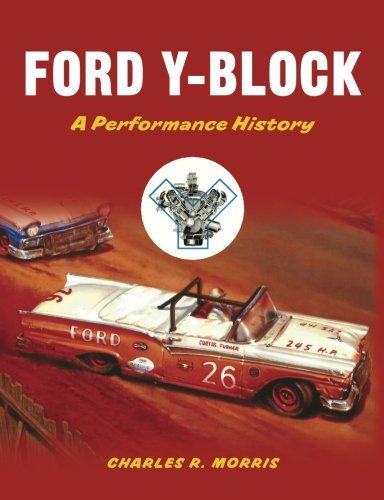
Here is a true accounting of the many racing accomplishments of one of the most maligned engine series ever to roll out of Detroit. The Y-Block Ford V-8, an engine that provided Ford with racing victories unrivaled by any another auto manufacturer of the time, became a victim of the internal and external politics of the auto industry and the bias of the automotive media. This book will document the wins recorded and records set by Y-Block-powered vehicles on the Salt Flats of Bonneville, on NASCAR and USAC stock car tracks, the lofty heights of Pike’s Peak, and on drag strips and bullring dirt tracks from coast to coast. Ford Y Block: A Performance History is packed with previously unpublished photos and personal accounts from those who actually made the history. Long-time Ford fanatic Charlie Morris delivers the ultimate vindication of this sturdy, historic performing engine series as reflected in the current trend towards nostalgic styles of racing. A renewed interest in the Y-Block has fostered the development of modern aftermarket speed equipment. This has led to heretofore unheard of horsepower numbers and performances that have returned the Y-Block to the winner’s circle more than six decades after its debut.
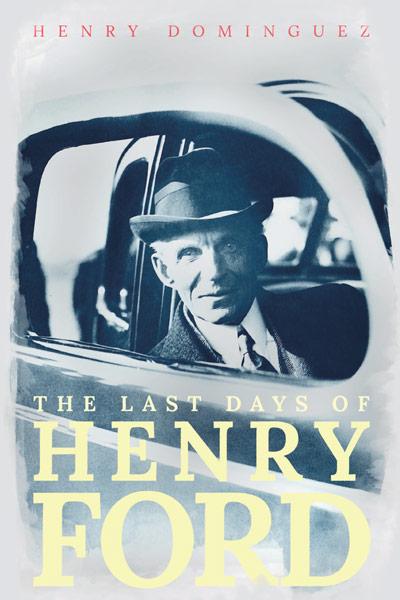
Award winning author and historian, Henry Dominguez, combed through dusty newspapers, viewed historic newsreels, and interviewed nearly four dozen eye witnesses, and weaved together in minute detail the last eighteen months of Henry Ford’s live. And the story turned out to be just as fantastical as the rest of the motor magnate’s life.
The Fords’ had had a busy 1946-attending numerous ceremonies commemorating Ford’s 50th anniversary of completing his first motorcar, and celebrating his 83rd birthday party with 80,000 residents of Dearborn, his hometown. At the beginning of 1947, he and his wife, Clara took their usual winter sojourn to their magnificent estate outside Savannah, Georgia. When they returned to Dearborn the end of March, rains began that would set the stage for the dramatic end to Henry Ford’s life.
Saddened by the early death of his son, Edsel, battling dementia and the effects of old age, Henry Ford faded away in mid-century, just as the automobile industry and the city of Detroit reached the heights of their fortunes. This painstakingly chronicled history will intrigue and haunt all who read it.
















